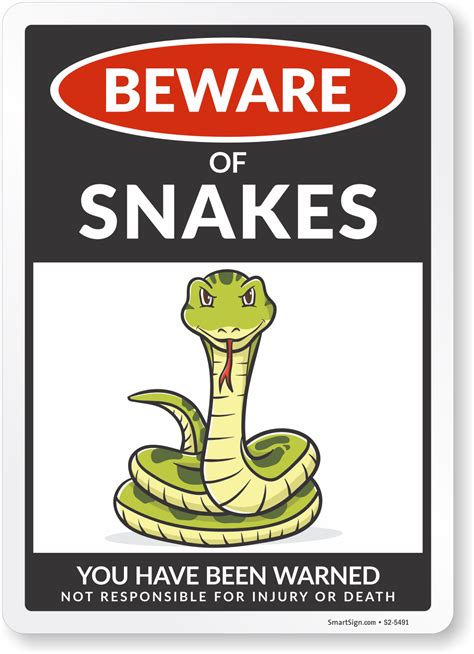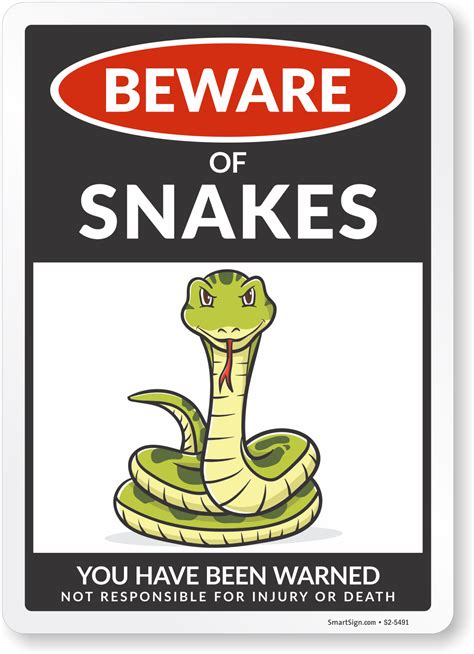
A heartwarming video of a toddler carefully tucking in two massive Great Danes for a sleepover has captivated the internet, melting hearts worldwide. The adorable scene, shared widely on social media, shows the young child tenderly covering the gentle giants with blankets, creating a moment of pure innocence and interspecies affection.
The viral video features a toddler, identified as Rylee, diligently preparing her two Great Dane companions, Ava and Lila, for bedtime. The footage showcases Rylee carefully draping blankets over the dogs, ensuring they are comfortably tucked in. The dogs, in turn, patiently and calmly allow Rylee to fuss over them, showcasing their gentle nature and deep bond with the toddler.
“It’s so sweet to see how much love and care she has for them,” said Rylee’s mother, Chelsea, in an interview. “They are her best friends, and she treats them like her babies.” The video has garnered millions of views across various social media platforms, with users expressing their admiration for the unique and heartwarming relationship between the toddler and her canine companions. The shared video, initially posted on platforms like TikTok and Instagram, quickly spread, attracting attention from news outlets and online communities alike.
The Great Danes, known for their imposing size but gentle temperament, have become integral members of Rylee’s family. Chelsea, Rylee’s mother, emphasizes that Ava and Lila are not just pets but cherished members of the family. Their calm and patient demeanor makes them ideal companions for a young child, fostering a safe and loving environment. “We always supervise their interactions, of course, but the dogs are incredibly gentle with Rylee,” Chelsea added. “They seem to understand that she’s just a little kid.”
The video’s popularity highlights the powerful connection between children and animals. Studies have shown that interacting with pets can have numerous benefits for children, including improved emotional well-being, reduced stress levels, and enhanced social skills. The bond between Rylee and her Great Danes exemplifies these benefits, demonstrating the positive impact of animal companionship on a child’s development.
The heartwarming scene also serves as a reminder of the importance of responsible pet ownership. Great Danes, despite their gentle nature, require specific care and training due to their size and unique needs. Chelsea emphasizes the importance of providing her dogs with proper exercise, nutrition, and veterinary care to ensure their health and well-being.
Beyond the immediate viral sensation, the video sparks broader conversations about the role of pets in families and the positive influence they can have on children’s lives. It underscores the gentle nature of Great Danes, often misperceived due to their size, and highlights the potential for deep, meaningful connections between children and animals.
Expanded Details and Context:
The video’s success stems from its simple yet profound depiction of innocence and affection. In a world often filled with negativity, the sight of a toddler caring for her canine companions provides a welcome dose of positivity and hope. The video’s widespread appeal speaks to the universal human desire for connection and compassion, resonating with viewers of all ages and backgrounds.
Chelsea, Rylee’s mother, has been documenting the interactions between Rylee and the Great Danes on social media for several years. She initially started sharing photos and videos with friends and family, but the content quickly gained a wider audience due to its heartwarming nature. The positive response inspired Chelsea to continue sharing the family’s experiences, providing a glimpse into their daily lives and the unique bond between Rylee and her canine companions.
The Great Dane breed, originating in Germany, is known for its impressive size and gentle temperament. Despite their imposing stature, Great Danes are often referred to as “gentle giants” due to their affectionate and patient nature. They are typically good with children and other animals, making them popular family pets. However, potential owners should be aware of their specific needs, including their susceptibility to certain health conditions and their need for plenty of space and exercise.
Veterinarians recommend regular check-ups and a balanced diet to maintain the health of Great Danes. Due to their rapid growth, they are prone to certain musculoskeletal problems, such as hip dysplasia and bloat. Responsible breeders prioritize health screening and genetic testing to minimize the risk of these conditions.
The American Kennel Club (AKC) recognizes the Great Dane as a distinct breed and provides guidelines for responsible breeding and ownership. The AKC also offers resources for potential owners, including information on breed characteristics, care requirements, and finding reputable breeders.
The video of Rylee tucking in her Great Danes has also sparked discussions about the appropriate age for children to interact with large dogs. Experts recommend that children should always be supervised when interacting with animals, regardless of the breed. Parents should teach children how to approach and interact with dogs safely and respectfully. This includes avoiding sudden movements, respecting the dog’s personal space, and recognizing signs of discomfort or stress.
Organizations like the American Society for the Prevention of Cruelty to Animals (ASPCA) offer educational resources on responsible pet ownership and child safety. These resources provide valuable information for parents and caregivers on how to create a safe and harmonious environment for both children and pets.
The viral video serves as a reminder of the importance of promoting positive interactions between children and animals. By fostering empathy and respect for animals, we can help children develop into compassionate and responsible adults. The bond between Rylee and her Great Danes exemplifies the potential for deep and meaningful connections between children and animals, enriching their lives and promoting their overall well-being.
The Impact on Social Media:
The video’s rapid spread across social media platforms highlights the power of visual content to evoke emotions and connect people. Platforms like TikTok and Instagram have become hubs for sharing heartwarming stories and showcasing the unique bonds between humans and animals. The video’s success underscores the potential of social media to promote positive messages and inspire acts of kindness and compassion.
Social media influencers and animal advocates have also shared the video, further amplifying its reach and impact. Many have praised Chelsea for documenting the heartwarming relationship between Rylee and her Great Danes and for promoting responsible pet ownership. The video has also inspired others to share their own stories of children and animals, creating a ripple effect of positivity and connection.
However, the video’s popularity has also raised concerns about the potential for exploitation and the need to protect children’s privacy online. Experts recommend that parents carefully consider the content they share online and take steps to protect their children’s personal information. This includes using privacy settings, avoiding sharing sensitive details, and monitoring their children’s online activity.
Organizations like the National Center for Missing and Exploited Children (NCMEC) offer resources for parents on online safety and child protection. These resources provide valuable information on how to navigate the digital landscape safely and responsibly.
Despite these concerns, the video’s overall impact has been overwhelmingly positive. It has served as a reminder of the importance of compassion, kindness, and the unique bonds between humans and animals. It has also inspired countless individuals to reflect on their own relationships with pets and to appreciate the joy and companionship they bring to our lives.
The Role of Responsible Breeding and Pet Adoption:
The popularity of the Great Dane breed has also sparked discussions about responsible breeding and pet adoption. Animal shelters and rescue organizations are often overwhelmed with animals in need of homes, including Great Danes. Potential pet owners are encouraged to consider adopting a rescue animal before purchasing from a breeder.
Adopting a rescue animal can be a rewarding experience, providing a loving home for an animal in need and helping to reduce the number of animals in shelters. Rescue organizations typically screen potential adopters to ensure they are a good match for the animal and provide ongoing support and resources.
Responsible breeders prioritize the health and well-being of their animals and adhere to ethical breeding practices. They conduct health screening and genetic testing to minimize the risk of hereditary conditions and provide their animals with proper care and socialization. Potential pet owners should thoroughly research breeders and visit their facilities to ensure they are reputable and responsible.
Organizations like the American Society for the Prevention of Cruelty to Animals (ASPCA) and the Humane Society of the United States (HSUS) advocate for responsible breeding practices and promote pet adoption. They offer resources for potential pet owners on how to find reputable breeders and rescue organizations and provide guidance on responsible pet ownership.
The video of Rylee tucking in her Great Danes serves as a reminder of the importance of providing all animals with loving homes and responsible care. Whether adopting from a shelter or purchasing from a breeder, it is essential to prioritize the animal’s health, well-being, and safety.
The Broader Implications:
The viral video of Rylee and her Great Danes has resonated with people around the world, prompting reflection on our relationships with animals and the importance of compassion and kindness. It has also sparked discussions about responsible pet ownership, child safety, and the impact of social media.
The video’s success underscores the power of visual content to evoke emotions and connect people. In a world often filled with negativity and division, it provides a welcome dose of positivity and hope. It serves as a reminder of the universal human desire for connection and compassion and the potential for deep and meaningful relationships between humans and animals.
The video also highlights the importance of promoting positive interactions between children and animals. By fostering empathy and respect for animals, we can help children develop into compassionate and responsible adults. The bond between Rylee and her Great Danes exemplifies the potential for enriching their lives and promoting their overall well-being.
Ultimately, the viral video serves as a testament to the power of love, kindness, and connection. It reminds us of the importance of cherishing our relationships with animals and promoting a world where all beings are treated with respect and compassion.
Frequently Asked Questions (FAQs):
1. How old is the toddler in the video, and what are the names of the Great Danes?
According to the article, the toddler’s name is Rylee. The names of the two Great Danes are Ava and Lila. The exact age of the toddler was not specifically stated, but implied to be of toddler age.
2. What is the key takeaway from the viral video of the toddler and her Great Danes?
The key takeaway is the heartwarming depiction of the deep bond and affection between a young child and her two large dogs. It showcases the toddler carefully tucking the dogs into bed, highlighting the innocence and compassion of the child and the gentle nature of the Great Danes.
3. Where did the video originate, and where has it been shared?
The video was initially shared on social media platforms like TikTok and Instagram. It has since been widely circulated across various online platforms and news outlets, gaining millions of views.
4. What are some of the benefits of children interacting with pets, as highlighted by experts?
Experts suggest that interacting with pets can improve a child’s emotional well-being, reduce stress levels, and enhance social skills. The relationship between Rylee and her Great Danes exemplifies these benefits.
5. What are some of the concerns and considerations when owning a Great Dane, particularly with young children?
While Great Danes are generally gentle, their large size means responsible ownership is crucial. This includes proper training, socialization, veterinary care, and ensuring that children are always supervised during interactions with the dogs. Great Danes are also prone to certain health conditions, requiring proactive care.
Article Continued with Further Analysis:
The Psychology Behind the Appeal:
The video’s widespread appeal taps into several psychological factors. Firstly, it elicits a strong emotional response by showcasing innocence and vulnerability. The image of a toddler, a symbol of purity and dependence, caring for even larger, seemingly imposing creatures creates a visual juxtaposition that is both surprising and comforting.
Secondly, the video reinforces positive stereotypes about dogs and their loyalty. The Great Danes’ calm and patient demeanor reinforces the notion of dogs as gentle companions, challenging any preconceived notions based solely on their size.
Thirdly, the video provides a brief escape from the stresses of daily life. In a world saturated with negativity and conflict, the simple act of a child tucking in her dogs offers a moment of peace and tranquility, reminding viewers of the simple joys in life.
From a psychological perspective, the interaction between Rylee and her Great Danes triggers feelings of warmth, happiness, and contentment. The video taps into our innate desire for connection and compassion, reminding us of the importance of empathy and kindness.
Addressing Potential Criticisms:
While the video has received overwhelmingly positive feedback, some critics have raised concerns about the safety of allowing a young child to interact with such large dogs unsupervised. It is important to address these concerns and reiterate the importance of responsible pet ownership and child safety.
Chelsea, Rylee’s mother, has repeatedly emphasized that all interactions between Rylee and the Great Danes are closely supervised. She also stresses the importance of teaching children how to interact with dogs safely and respectfully. This includes avoiding sudden movements, respecting the dog’s personal space, and recognizing signs of discomfort or stress.
Furthermore, it is important to acknowledge that not all dogs are suitable for children. Certain breeds may be more prone to aggression or have higher energy levels that can be challenging for young children to manage. It is essential to carefully consider a dog’s temperament and energy level before introducing it into a household with children.
The Impact on Breed Popularity:
The viral video could potentially lead to an increase in the popularity of the Great Dane breed. While this could be positive in terms of raising awareness about these gentle giants, it is important to ensure that potential owners are fully aware of the responsibilities involved in owning such a large dog.
Great Danes require significant space, exercise, and specialized veterinary care. They are also prone to certain health conditions, such as bloat and hip dysplasia, which can be costly to treat. Potential owners should be prepared to meet these needs before bringing a Great Dane into their home.
Furthermore, it is important to discourage impulse purchases and encourage potential owners to thoroughly research the breed and ensure they are a good fit for their lifestyle. Adopting a Great Dane from a rescue organization is often a better option than purchasing from a breeder, as it provides a loving home for an animal in need and helps to reduce the number of animals in shelters.
The Role of Social Media in Animal Welfare:
The viral video highlights the potential of social media to promote animal welfare and responsible pet ownership. By sharing heartwarming stories and showcasing the unique bonds between humans and animals, social media can help to raise awareness about the importance of treating animals with kindness and respect.
However, it is also important to be aware of the potential downsides of social media, such as the spread of misinformation and the promotion of irresponsible pet ownership. It is essential to critically evaluate the information shared on social media and to seek out reliable sources of information on animal care and welfare.
Furthermore, it is important to protect the privacy of children and animals when sharing content online. This includes avoiding sharing sensitive personal information and ensuring that the content is not exploitative or harmful.
The Future of Human-Animal Interactions:
The viral video offers a glimpse into the future of human-animal interactions. As society becomes increasingly urbanized and disconnected from nature, the role of pets in our lives is likely to become even more important.
Pets provide companionship, reduce stress, and promote physical activity. They also offer children valuable opportunities to develop empathy, compassion, and responsibility.
As our understanding of animal behavior and welfare continues to grow, it is essential to promote ethical and responsible interactions with animals. This includes providing them with appropriate care, respecting their needs, and advocating for their rights.
The video of Rylee tucking in her Great Danes is a reminder of the profound connection between humans and animals and the potential for creating a more compassionate and harmonious world.
Further Elaboration on Great Dane Care and Health:
Given the potential increase in popularity of Great Danes due to the viral video, it is crucial to delve deeper into the specific care requirements and health considerations for this breed.
Diet and Nutrition: Great Danes are prone to bloat (gastric dilatation-volvulus), a life-threatening condition where the stomach fills with gas and can twist. Feeding them multiple small meals throughout the day instead of one large meal can help prevent this. Elevated feeding bowls were once thought to help, but recent studies suggest they may actually increase the risk of bloat. A high-quality dog food specifically formulated for large breeds is essential, ensuring the correct balance of nutrients for their rapid growth and bone development. Calcium levels are particularly important to monitor, as excessive calcium can lead to skeletal problems.
Exercise: While Great Danes don’t require excessive amounts of exercise, regular moderate exercise is necessary to maintain their muscle tone and prevent obesity. Short walks and playtime in a fenced yard are usually sufficient. Over-exercising puppies can damage their developing joints, so it’s crucial to avoid strenuous activities until they are fully grown.
Grooming: Great Danes have a short, smooth coat that requires minimal grooming. Regular brushing helps to remove loose hair and keep their coat healthy. Bathing should only be done when necessary, as frequent bathing can strip their coat of natural oils. Nail trimming is essential to prevent overgrowth and discomfort.
Health Concerns: Beyond bloat and hip dysplasia, Great Danes are also prone to other health problems, including:
- Cardiomyopathy: A disease of the heart muscle that can lead to heart failure.
- Osteosarcoma: Bone cancer, which is more common in large breeds.
- Hypothyroidism: A condition where the thyroid gland doesn’t produce enough thyroid hormone.
- Wobbler Syndrome: A neurological condition that affects the spinal cord, causing weakness and incoordination.
Regular veterinary check-ups are crucial for early detection and treatment of these health problems. Responsible breeders will screen their dogs for these conditions before breeding them.
Training and Socialization: Great Danes are intelligent and eager to please, but they can also be stubborn. Early socialization and consistent training are essential to ensure they develop into well-behaved companions. Puppy classes and positive reinforcement training methods are highly recommended. Due to their size, it’s crucial to teach them basic obedience commands, such as sit, stay, and come, from a young age.
Addressing Misconceptions about Large Breeds:
The viral video also provides an opportunity to dispel some common misconceptions about large breeds, such as Great Danes.
-
Myth: Large breeds are aggressive. Truth: Temperament varies from dog to dog, regardless of breed. Great Danes are generally known for their gentle and affectionate nature. Proper socialization and training are crucial for all dogs, regardless of size.
-
Myth: Large breeds require a lot of space. Truth: While large breeds need enough space to move around comfortably, they don’t necessarily need a huge yard. Regular exercise and mental stimulation are more important than the size of their living space.
-
Myth: Large breeds are expensive to care for. Truth: Large breeds can be more expensive to care for due to their larger food portions and higher veterinary costs. However, with proper preventative care and responsible ownership, these costs can be managed.
The Ethical Considerations of Breeding:
The popularity of specific breeds, often driven by media attention, can lead to unethical breeding practices. Puppy mills and backyard breeders often prioritize profit over the health and welfare of their animals, leading to genetic problems and behavioral issues.
It’s crucial to support responsible breeders who prioritize the health and temperament of their dogs. Responsible breeders will conduct health testing, provide proper care and socialization, and be transparent about their breeding practices.
Adopting a rescue dog is also an ethical choice that helps to reduce the number of animals in shelters and supports organizations that are dedicated to animal welfare.
The Importance of Promoting Responsible Pet Ownership Education:
The viral video serves as a reminder of the importance of promoting responsible pet ownership education. This includes teaching children how to interact with animals safely and respectfully, as well as educating adults about the responsibilities involved in owning a pet.
Schools, community organizations, and animal shelters can play a role in providing pet ownership education. This education should cover topics such as:
- Animal behavior and communication
- Basic animal care and nutrition
- The importance of socialization and training
- Animal welfare laws and regulations
- The ethical considerations of pet ownership
The Long-Term Impact of the Video:
The long-term impact of the viral video remains to be seen. However, it has undoubtedly raised awareness about the unique bond between children and animals and the importance of responsible pet ownership.
It is hoped that the video will inspire more people to consider adopting a rescue animal and to treat all animals with kindness and respect. It is also hoped that the video will serve as a reminder of the simple joys in life and the power of love and connection.
In conclusion, the viral video of Rylee tucking in her Great Danes is more than just a heartwarming moment; it is a catalyst for important conversations about animal welfare, responsible pet ownership, and the profound connection between humans and animals.
Further FAQ:
6. What specific training techniques are recommended for Great Danes to manage their size and strength?
Positive reinforcement training is generally recommended. Due to their size, early socialization and obedience training are crucial. Techniques should focus on clear communication, consistency, and rewarding desired behaviors. Avoid harsh or punitive methods, as they can be detrimental to their temperament.
7. How does this viral video compare to other instances where animals become internet sensations?
Similar to other animal internet sensations, this video’s appeal lies in its simplicity and heartwarming nature. The unexpected combination of a toddler and massive dogs, coupled with the act of caretaking, creates a compelling narrative that resonates with a wide audience. It follows the pattern of showcasing animal cuteness and unexpected animal-human bonds that often go viral.
8. What are some potential downsides to the video going viral in terms of the family’s privacy and the dogs’ well-being?
Potential downsides include the loss of privacy for the family, increased attention and potential harassment from the public, and the risk of attracting unwanted attention to the dogs, such as potential theft or harm. There is also the risk of copycat behavior, where others try to replicate the video without proper safety precautions.
9. Beyond the immediate emotional reaction, what broader societal values does the video reinforce?
The video reinforces values such as compassion, kindness, responsibility, and the importance of interspecies connection. It highlights the positive impact of empathy and caregiving, promoting a sense of community and connection with the natural world.
10. What actionable steps can viewers take after watching the video to promote responsible pet ownership and animal welfare?
Viewers can donate to animal shelters and rescue organizations, volunteer at local animal shelters, advocate for animal welfare legislation, educate themselves and others on responsible pet ownership, consider adopting a pet from a shelter or rescue organization, and support ethical breeders who prioritize animal health and welfare. Additionally, they can share information about responsible pet ownership and animal welfare on social media to further spread awareness.









